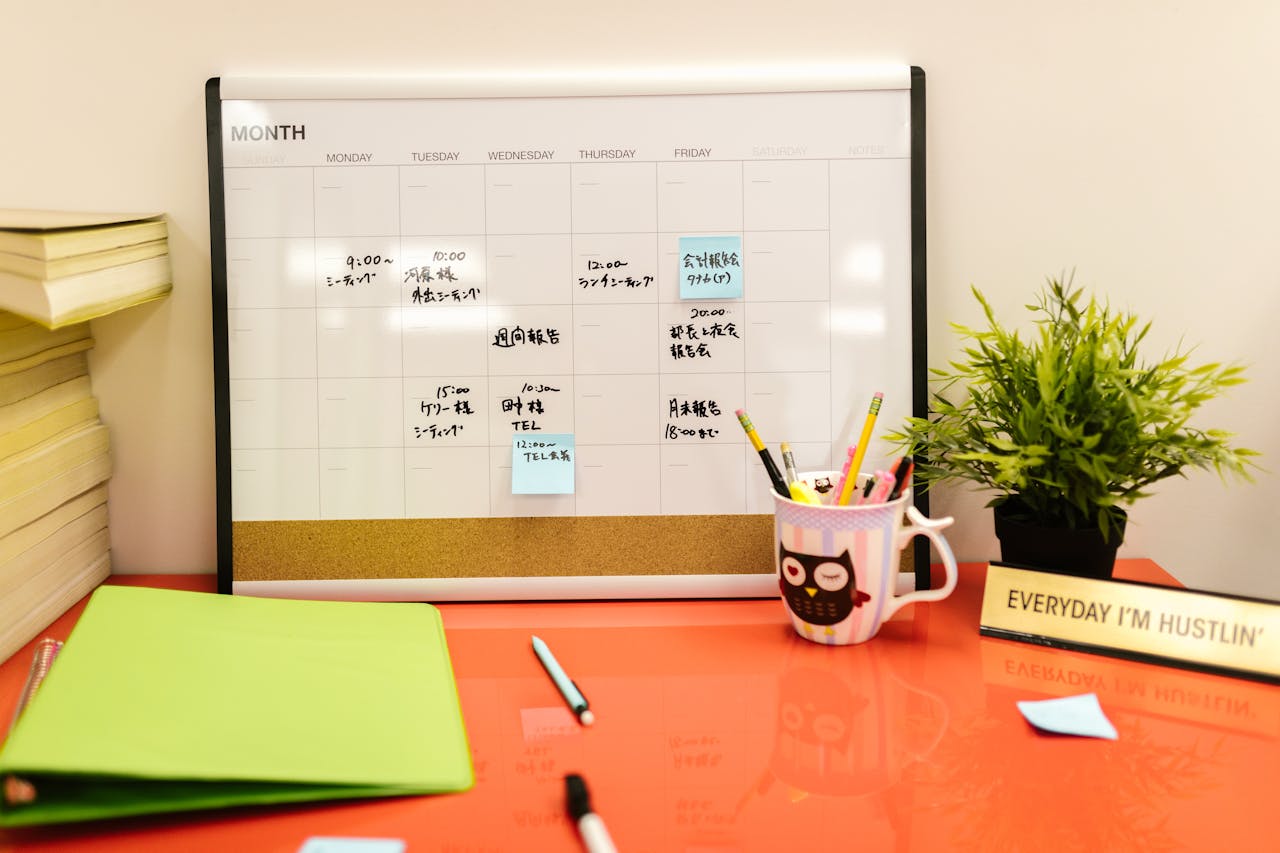

The calendar has existed for thousands of years, from the Ancient Romans to the Aztecs. Keeping track of time is clearly an important concept that humans recognized from the beginning, and it hasn’t stopped since. Luckily, you don’t need to carve into a stone tablet to keep a calendar. Today’s technology has dramatically evolved how we use this invention, and you may be shocked by its many capabilities.
Using a calendar to keep track of work, school, or life in general is a great way to stay organized. However, you might not maximize all the capabilities a scheduling system has in store. Whether paper or virtual, keep reading for some tips and tricks to get the most out of your calendar.
1. Set Reminders
With today’s modern technology, you now have the option to keep a calendar wholly online. You can download many calendar apps on your phone or computer, including Microsoft Calendar, Google Calendar, and Calendar.com. Perhaps one of the most popular virtual calendar resources to use are reminder notifications. This helpful feature ensures you don’t forget about upcoming events or appointments by sending a notification. Whether this is set up on your phone or computer, you’ll get a pop-up with event details on the screen.
The way you can utilize the reminder feature is also quite flexible. For example, you can customize when a notification will go off for each event. If you want to give yourself plenty of warning beforehand, many apps allow notifications to go off up to two days in advance. And on the other side of that spectrum, you can set a notification up to 5 minutes before an event. Moreover, several calendar apps let you set up multiple notifications for the same appointment so you can be sure you’ll see it.
Additionally, don’t shy away from using the detailed reminders feature. This allows you to add more information to a calendar event than just the title, time, and place. If you’re using these reminders for work or school, this feature can be extremely helpful. You can write down extra notes for assignments that you might benefit from having all in the same place.
2. Try Color Coding
Organization is an essential skill that can maximize efficiency and productivity and be used for calendars, too. One of the easiest ways to organize a schedule is through color coding. This involves grouping events and tasks by color to see at a glance what category they belong to. Grouping functions in the form of categorizing can improve your efficiency and help you stay on top of everything. This is especially true if several events and assignments are filling up your schedule.
You can even take your color coding a step further by assigning colors based on association. For example, red is often associated with urgency, so you could group your highest-priority tasks with this color. Following this mindset — think of a stoplight — green could be related to tasks that are less important. If you use your calendar to organize school assignments, choose a different color for each class’s tasks. You might spend some time assigning colors initially, but color coding’s benefits are worth the setup.
3. Use the Tasks App
One of the newer features of many virtual calendar apps is often referred to as “Tasks.” From Microsoft to Google, Tasks allows you to explore your schedule’s capabilities more deeply. Unlike detailed reminders, this feature acts more like an online checklist you can refer to throughout the day.
Having a to-do list can be a successful motivational tool — there’s something so satisfying about crossing off an item. With Tasks, you can do just that digitally on your phone or computer. You can get detailed by using subtasks, which also break up an item into smaller parts that lead to accomplishing a larger whole. This can be extremely useful with assignments with several parts, like writing a research paper.
4. Integrate Schedules
Another advantage of having an online calendar is the ability to overlay all your calendars into one. For example, many companies have their own chosen calendar software for employees to use. This is great for keeping your workspace all together, but jumping between schedules can sometimes get confusing. Using more than one calendar for different aspects of your life isn’t a particularly efficient way to stay on top of things.
Solve this issue by integrating your calendars—a fairly new feature that many calendar apps offer. This allows you to take information from multiple schedules and display it all in one place. You can combine your work, school, and personal calendars this way and never have to look through different schedules again.
5. “Do” Days vs. “Due” Days
With an online calendar, you have the option to use detailed tasks or reminders, but sometimes that’s still not enough. Sometimes, not every event or task can be summarized in a reminder. Being able to hand-write extra information about an assignment or event is one advantage of a paper calendar or planner. Utilizing this ability to get super detailed, try out the concept of “do” days versus “due” days.
In short, the due date is an assignment’s hard deadline, and the due date is when you work on it. For example, you usually don’t start working on a task the day it’s due, so schedule the days you work on it. Deciding in advance when to spend time on assignments can make accomplishing them feel less painful. This is an easy time management technique that helps you avoid procrastinating and get better at mastering your schedule.
6. Keep a Paper Planner
While virtual calendars and all their technology are excellent, sometimes returning to old-fashioned methods can be beneficial. Maybe you want less screen time or simply prefer writing things out by hand. Regardless, the tried-and-true paper calendar has its perks, like increased information retention from handwriting and fewer distractions than a phone.
You can’t maximize the way you use your calendar unless you put in the necessary focus. You might get distracted if social media notifications pop up on your phone while looking at your calendar app. Additionally, attempting to memorize what’s on your schedule will save you the trouble of repeatedly looking up events and tasks. Writing information down by hand often leads to better memorization and information recollection, which is impossible with a virtual calendar. And just like your phone, you can keep a small paper planner wherever you go. Just make sure to grab a pen, too.
Let Your Calendar Work for You
It’s important to remember your calendar is not meant to be restrictive or box your life in by deadlines. A schedule is intended to be a helpful tool that acts as a helping hand and reminder of pertinent tasks and events. Think of it as your little helper who wants you to succeed and stay on top of your life. With this attitude, you won’t feel defined by your calendar — your life will determine what goes in the calendar. Utilizing this tool to its fullest will increase productivity and efficiency, leading to more time to enjoy the ride.
Featured Image Credit: Photo by RDNE Stock project; Pexels











Angela Ruth
My name is Angela Ruth. I aim to help you learn how Calendar can help you manage your time, boost your productivity, and spend your days working on things that matter, both personally and professionally. Here's to improving all your calendars and becoming the person you are destined to become!